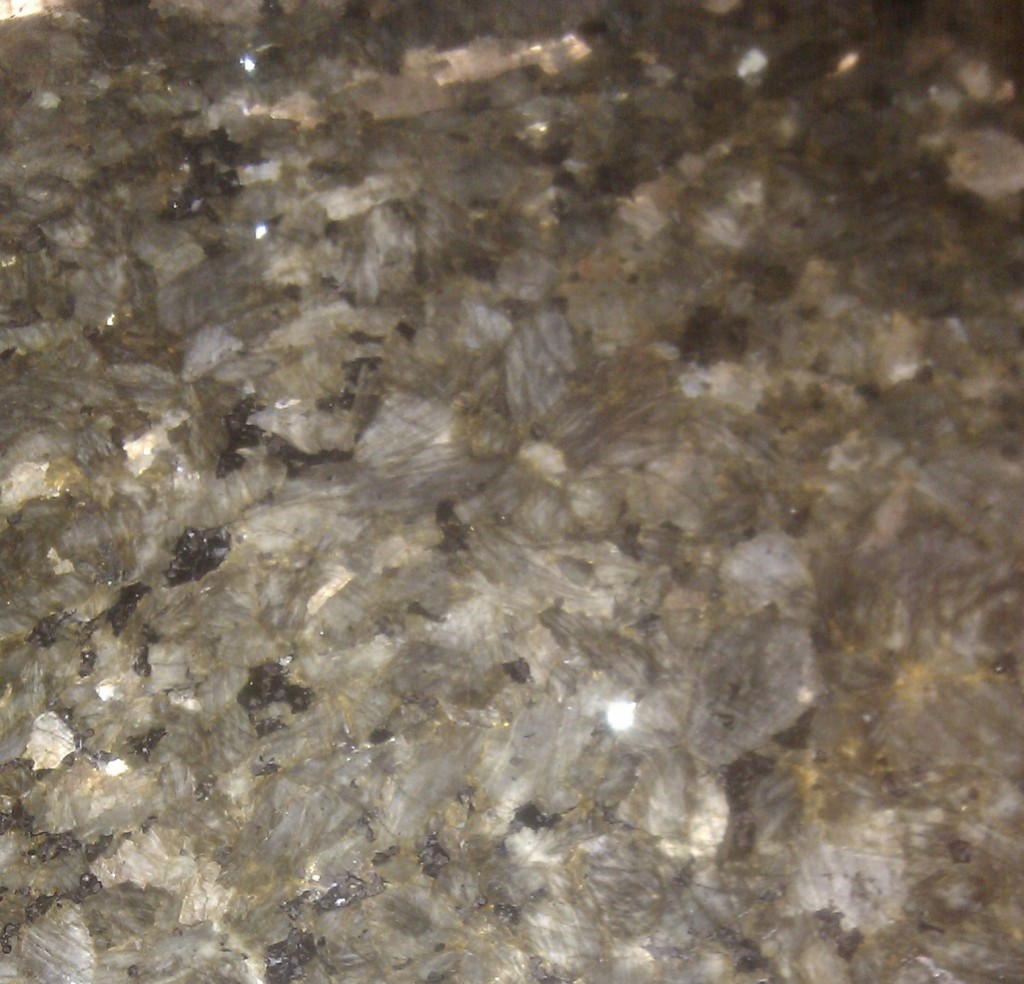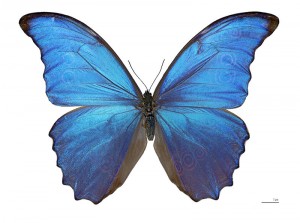Here’s my contribution to Ron Schott’s labradorite geomeme (inspired by Sandatlas’s Lunar Anorthosite).
One place that labradorite is popular is in posh office-buildings. I work in such a place and I snuck down to the canteen restaurant and took a picture. No shoes for scale this time, as they serve food just out of shot. The Schiller effect / labradorescence is there in the outcrop, honest.
The rock type is most likely larvikite, a popular ornamental stone in the UK, quarried in (you guessed it) Larvik in Norway.
My favourite things about labradorite involve butterflies and poetry.
The optical effect that makes it so lovely, is due to exsolution in feldspar, a phenomena that results in lots of parallel layers of slightly different composition. The thickness of the layers depends on the composition of the feldspar, with labradorite, this thickness is very small, sufficiently close to the wavelength of light to cause beauty.
The same effect is also found in butterfly wings, which I find rather pleasing. I knew a physicist who was being paid to study this effect in butterflies with a view to commercialising it. I don’t know how he go on, but maybe somebody is about to bring out a labradorescent something-or-other for us to buy.
I’ve always found exsolution rather poetic. At high temperatures, when they form, plagioclase feldspars are as one. Sodium and Calcium atoms mingle freely in the lattice, sharing the same spaces, side by side. They put aside petty differences of mass and rejoice in their similar size and valence, finding strength and common purpose, sharing electrons with their Aluminium, Silicon and Oxygen comrades. As temperatures fall, things change. In a colder world, they slowly, silently start to drift apart, huddling into ghettoes, seeking out only their own kind. The one, single shared lattice is balkanised, split into strips where only Sodium or only Calcium is welcome. Every plagioclase crystal we see is flawed in this way. Only labradorite, with its beauty, holds an echo of the wonder of the original crystal, where all ions were equal and lived together in peace.
Back down to earth, I have a geeky question to finish. What does labradorite look like in thin-section? Other, lesser plagioclase compositions have rather handsome black and white stripes in crossed-polars. Are these visible in labradorite or are they too small?


